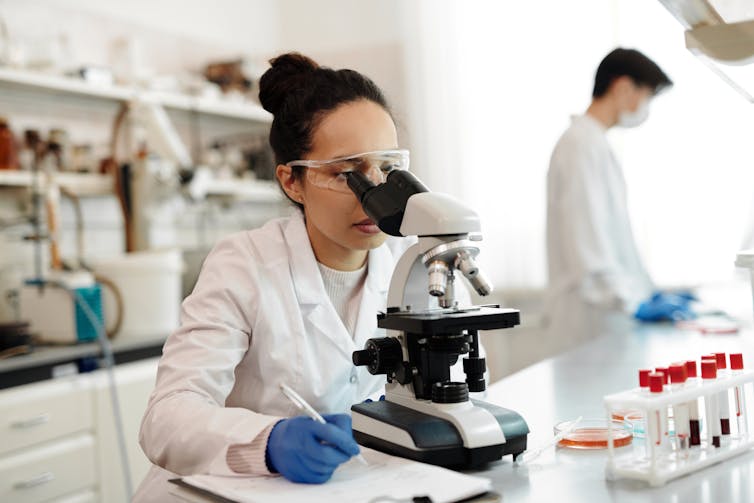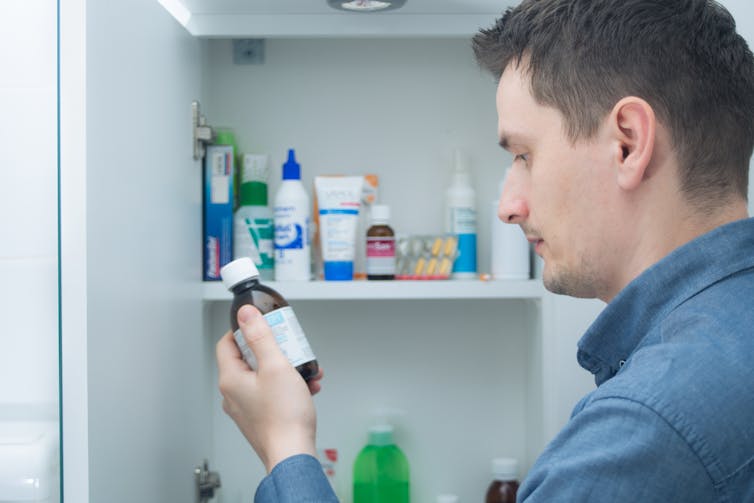
Antimicrobial resistance is one of the biggest global threats to health, food security and development. This month, The Conversation’s experts explore how we got here and the potential solutions.
Imagine a world where simple infections could become life-threatening, where a small cut could spell disaster, and where doctors couldn’t treat diseases effectively anymore. This isn’t the plot of a science fiction movie – it’s a real concern.
For decades, antibiotics have been used successfully to fight a wide range of bacterial infections. However, overuse of these medicines has led to the development of antibiotic-resistant bacteria, known as “superbugs”.
Scientists are now in a race against time to discover new antibiotics that can defeat these bacteria. While this has been a difficult task, the recently discovered antibiotic clovibactin has renewed hope that we can fight our way out of this antibiotic resistance crisis.
So is clovibactin the saviour we’ve been hoping for? Or is it another in a long list of antibiotics that will remain only useful for research? The results so far are mixed.
Read more: The rise and fall of antibiotics. What would a post-antibiotic world look like?
Remind me, how do antibiotics work?
Antibiotics work by either directly killing bacteria or preventing them from growing and dividing. They do this by targeting parts of the bacterial cell that are not present in human cells.
Bacteria are surrounded by a cell wall. It might be helpful to imagine the cell walls around bacteria as the walls of a fortress, which helps them survive in the environment.
Antibiotics are like a group of knights trying to breach the walls and take down the enemy inside. Traditional antibiotics, like penicillin, act to weaken these walls. They kill the bacteria and make it easier for our immune system to finish the job.
However, bacteria have evolved to resist these attacks, meaning that antibiotics in some cases no longer have any effect.
Read more: How do bacteria actually become resistant to antibiotics?
What about clovibactin?
Clovibactin works differently. It targets bacteria from the inside out, taking away the bricks that are used to build the wall in the first place.
Bacteria have very limited options when choosing bricks to build their walls, so this approach means that resistance is much less likely to develop.
This mechanism of action is unique and offers hope that we can use clovibactin as a model to develop other antibiotics that act in a similar way.
But significant challenges still lie ahead.
Why do most antibiotics fail?
The field of antibiotic discovery is littered with drugs that have failed to progress beyond the early stages of research.
Antibiotic testing usually progresses from the laboratory bench to animal trials and, eventually, to human trials. While some antibiotics are very effective at killing bacteria in the lab, they are not always used to treat patients.

There are many reasons why this happens that cannot be predicted when an antibiotic is first discovered. An unfortunate, yet common, example is that antibiotics that appear safe in animals may turn out to be toxic at the higher doses required to treat humans.
Such unforeseen complications during the development phase are one part of the reason why more than 98.5% of newly discovered antibiotics never make it out of the lab.
Even for those with a perfect development pathway, the average time to market is nine years at a cost of greater than US$1 billion.
For clovibactin, the early signs look promising. No toxicity in human cells was detected and it successfully cured mice infected with golden staph.
However, there are still risks and market forces that may also be against clovibactin.
Pharmaceutical companies want a return on their investment
Antibiotics are not particularly profitable drugs and for a drug company to recoup their investment, an antibiotic must kill as many different bacteria as possible.
Health bodies such as the World Health Organization and the United States Centers for Disease Control have compiled lists of bacteria that pose the greatest threat to humans and for which we have limited treatments. Although clovibactin can kill some of the drug-resistant bacteria on these lists, it is not effective against the most troublesome and damaging bacteria.
Even for those it can kill, it does not appear to be superior to already available drugs, such as vancomycin.
Such shortcomings may prevent clovibactin from gaining future United States Food and Drug Administration (FDA) approval.
Although, scientists may be able to overcome these issues by chemically “tweaking” clovibactin to give it the desired traits.
Read more: Will we still have antibiotics in 50 years? We asked 7 global experts
Even if it works, we’ll still need other antibiotics
Although clovibactin offers hope, one new compound alone cannot solve our current antibiotic resistance crisis. In fact, even the 64 antibiotics currently in clinical trials will be insufficient, particularly as 80% of these will likely hit development hurdles.

The good news is that more than one-third of these 64 antibiotics target infections for which we desperately need new treatments, including tuberculosis and gut infections caused by Clostridium difficile.
As we eagerly await the day new antibiotics become part of our standard medical treatments, it’s crucial for all of us as individuals to continue practising good hygiene and following prescribed antibiotic regimens.
Continuing support for research to combat antibiotic resistance is also needed, not just from governments and non-profits, but also through policies that incentivise private sector investment.
In doing so, we can maintain these effective weapons in the fight against bacterial infections for as long as possible.
Read the other articles in The Conversation’s series on the dangers of antibiotic resistance here.
Sacha Pidot receives funding from the National Health and Medical Research Council and the Australian Research Council for research on antibiotics.
This article was originally published on The Conversation. Read the original article.







